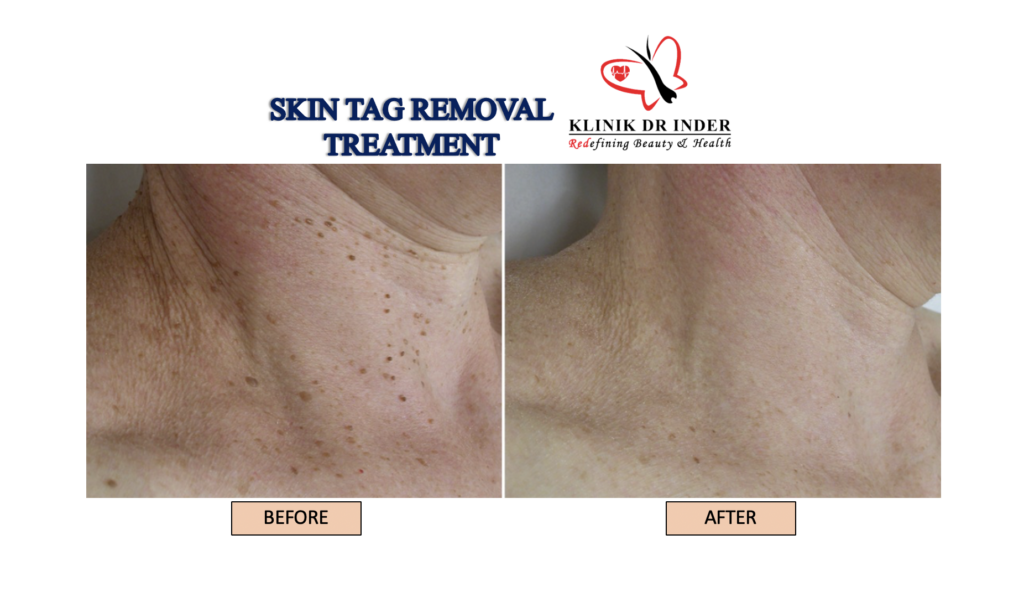
When they appear in awkward places like the folds of your skin or on your face, skin tags may be a major annoyance. tags can become uncomfortable when they get caught on things like jewellery, hairbrushes, or razors, or when they rub against clothes.
When they become itchy or unpleasant, skin tags can be readily removed by Dr Inder Kaur, M.D., a board-certified dermatologist at Klinik Dr Inder in Kuala Lumpur (Petaling Jaya). If skin tags on your face or neck are making you self-conscious, Dr Inder and her team of professionals can help.
Skin tags: what we know
Any part of your body is fair game for the development of a skin tag, which is a little, dangling growth of skin. Skin tags are noncancerous growths that tend to occur in creases and folds. Whether smooth or bumpy in appearance, skin tags are made up of nerve and fat cells. Tags vary in appearance; some stay a skin tone, while others darken with time.
The majority of people who have skin tags on their bodies don’t know it. Tags often fall off in a painless, natural process. If a large skin tag becomes twisted on itself, it might eventually die from a lack of blood flow and fall off.
Although the exact reason why skin tags develop is still a mystery, it is thought that friction from neighbouring skin or clothes is to fault. Some studies have also linked the human papillomavirus (HPV) to the development of skin tags. Skin tags are most commonly caused by a hereditary tendency, and so occur more frequently in people with such a propensity. Because they generate more insulin-like growth factor, they are also more prevalent in those with higher insulin levels or diabetes.
Skin tags can appear at any time, although they are more common during times of hormonal shift like pregnancy and menopause.
The importance of professional assessment on your skin
The vast majority of people have harmless skin tags. Skin tags are often harmless, although they can sometimes seem like cancer or another dangerous skin development.
You should make an appointment with Dr Inder, M.D., a board-certified dermatologist, to confirm that the growth on your skin is a skin tag. She is qualified to assess the state of your skin and make sure any bumps aren’t malignant.
If you notice any changes to your skin, it’s important to get it checked out right away so that any major problems may be detected and treated promptly.
Treatments available for skin tags
It may be time to consider getting a skin tag removed if it is affecting your self-esteem or if it is causing you discomfort, agony, or bleeding. Skin tags may be removed in a number of ways, some of which are as simple as using an over-the-counter medication. While these techniques can help with skin tags, it’s essential to have a comprehensive skin assessment with a dermatologist like Dr Inder before attempting any at-home treatments.
Skin tags can be removed in a doctor’s office by snipping off the growth using surgical scissors. Cryotherapy, in which Dr Inder employs liquid nitrogen to kill off the extra skin, is another option. Occasionally, electrocautery, which burns away the skin growth without harming the surrounding skin, is necessary for the removal of skin tags.
Whether your skin tags are affecting your self-esteem or you simply want them gone because they’re an annoyance, board-certified dermatologist Dr Inder of Klinik Dr Inder in Kuala Lumpur (Petaling Jaya), is the one to see.







